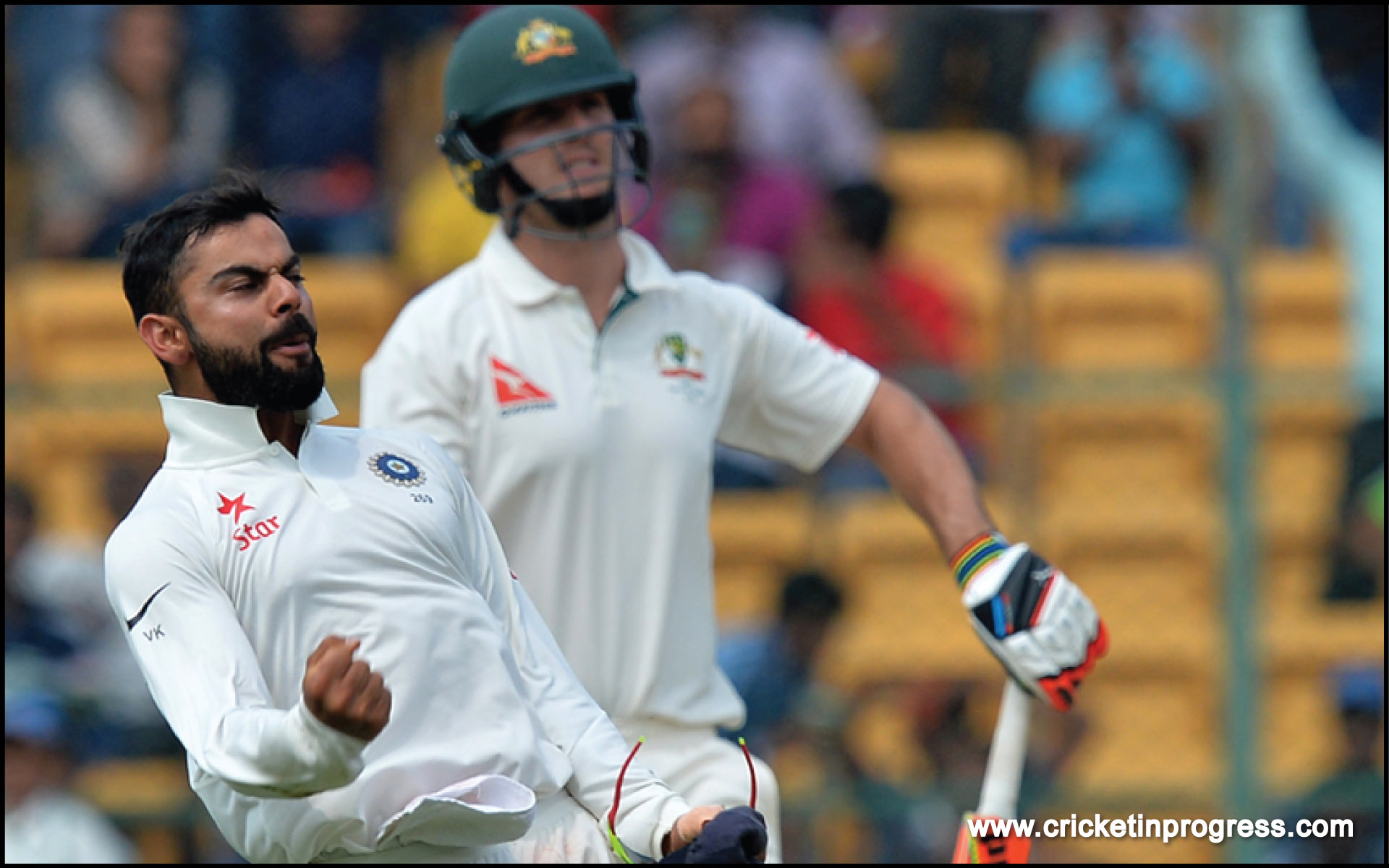Does the ‘good-boy’ image really suit Australia?
Ah! The familiar sight is back. The only people happier than me would be a certain Mr. Ricky Ponting and another certain someone called Mr. Michael Clarke. Having voiced their opinions publicly as to how unhappy they are with the ‘good-boy’ approach that the Australian team have adopted, it would have come as a sigh of relief for them to see their former team back in familiar territory. In a lot of senses, the 2nd TEST between India and Australia marked a homecoming for the Australian team.
While not as surprising as it would have been 5 years ago, it’s ironic that it took an opposition like India to bring out the Australian out of the Australians (cricketers). The timing couldn’t have been any better as it sets a euphoric scene for any cricket lover. Series squared, Boxing Day test coming up and everything to play for. So much so that if you were to put a million dollars in front of me alongside the remainder of the series set in such a beautiful backdrop, I’d take exactly the amount I need to fly to Australia, watch all possible days of cricket in the stadium, stay, eat and fly back to India.
After the ball-tampering saga, which in my opinion was blown too much out of proportion (but that’s a story for some other article), and following a change in the leadership – on and off the field – the Australians seemed to have projected a ‘good-boy’ approach; an approach in which they desperately tried to give birth to an ‘ethically acceptable’ way of playing the game. You’d almost think that the whole world was complaining about Australia’s code of conduct since a long time. It is interesting to note that since 30 March, Australia has played 23 matches across formats and winning only 5, apart from drawing a solitary Test match. What is also interesting to note that 2 of those wins came against Zimbabwe and 1 win came against UAE, in the shortest format of the game. Now, I am not saying that Australia lost all these matches because of their ‘good-boy’ attitude but it would also be erroneous to rule the timing as a coincidence or cite the reason as lack of necessary personnel.
The ‘good-boy’ approach has only ever worked for NewZealand and Srilanka, and for a better period of time, India. Therefore, it makes it difficult for me to see it ever working for Australia, a team with a history of 141 years of ‘not-a-good-boy’ approach. For Australia though, the ‘good-boy’ approach comes at a cost – divesting itself of the span class=”tooltip-style”>incentive that has fuelled them all their life. The cost is now apparent having seen them play with and without the approach in question; the results speak for themselves. It is my personal opinion that Australian Cricketers shouldn’t overcorrect their approach to cricket in the wake of the ball-tampering saga and asking them to correct their approach would be wrong on our part.
There is another way to look at this, which involves a sense of justification. For that I need to quote myself. “Sledging (apparently, the ‘not-a-good-boy’ approach) brings a new dimension to the game,” I told my dear friend. “Projecting a small group of people’s sense of morality onto everyone is an unfair expectation and as long as the general perception of the line of morality is not crossed, everything is fair.” A short gaze into your long-term memory will tell you that sledging is almost exclusively practiced by the fielding side and that it has benefited the bowlers more than it has batsmen, barring a few instances. So, in a game dominated by batsman-friendly rules, is it really a very bad thing to have a bowler-friendly dimensions, which, let’s for a moment agree, juggles on the boundary of the general perception of morality.

The Indians (some of them) sledging and giving it right back to the Australians is something that has not agreed well with the public. Rather than taking a high moral (excuse me for using this word too often) road, let’s take a pragmatic road. Yes, cricket is a gentleman’s game. Yes, sledging threatens that very image. But if you have, even for a moment enjoyed ODI, T20, Day/Night Test Match and/or T20 Leagues, you really cant complain about change. While it may have turned to be a positive improvisation for, there are many who feel that these improvisations wrote the death certificate of cricket. Wouldn’t it be much more beneficial and logical to embrace changes even of the nature of sledging rather than weighing it on a moral scale unique to you?
Going by that sort of defence (at least that’s what I like to call it), you can instantaneously say that I am a bowler who likes to say. And you wouldn’t be wrong. Although, that’s not where I am coming from when I write this article. I like to take atomic and pragmatic stands on issues as such by rationalising.
What is the conclusion? The content doesn’t really conform to the title but then again, the answer to the title question was given in the first paragraph itself. If I were a betting man, I’d put my money on Australia continuing with their ‘not-a-good-boy’ approach which they rediscovered in the 2nd TEST. And if Tim Paine is an analytical guy, he would see that the reflection on the results was immediate. As an Indian, with the luxury of knowing that Virat Kohli is going to step on the field as the captain of the Indian team, I say to Australia, “Bring it on! Don’t wear the ‘good-boy’ costume; it does not suit you.” That I say with the utmost optimism – that the erstwhile attitude of the Australian team continues and that Ricky Ponting and Michael Clarke get to stay happy.












